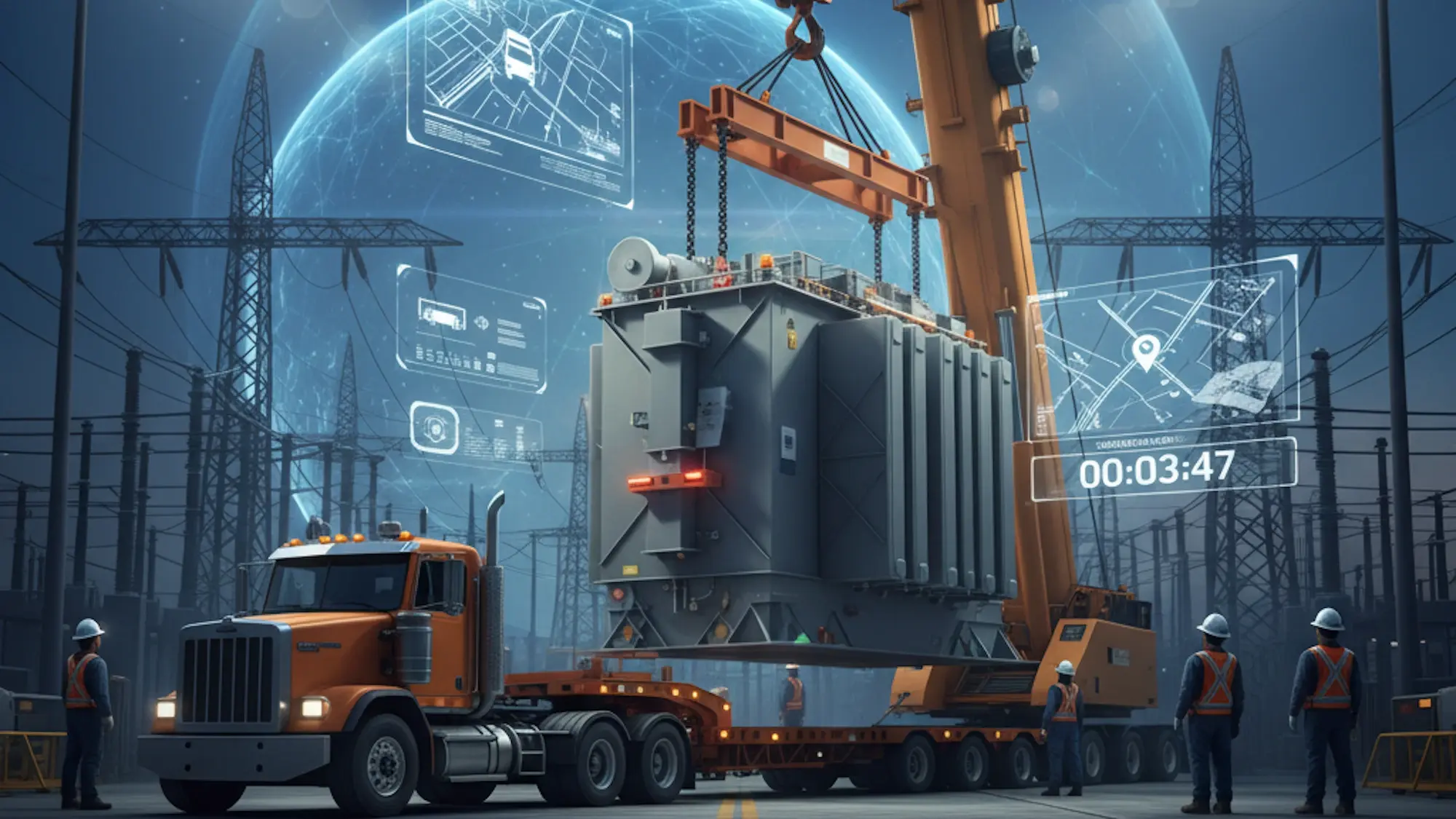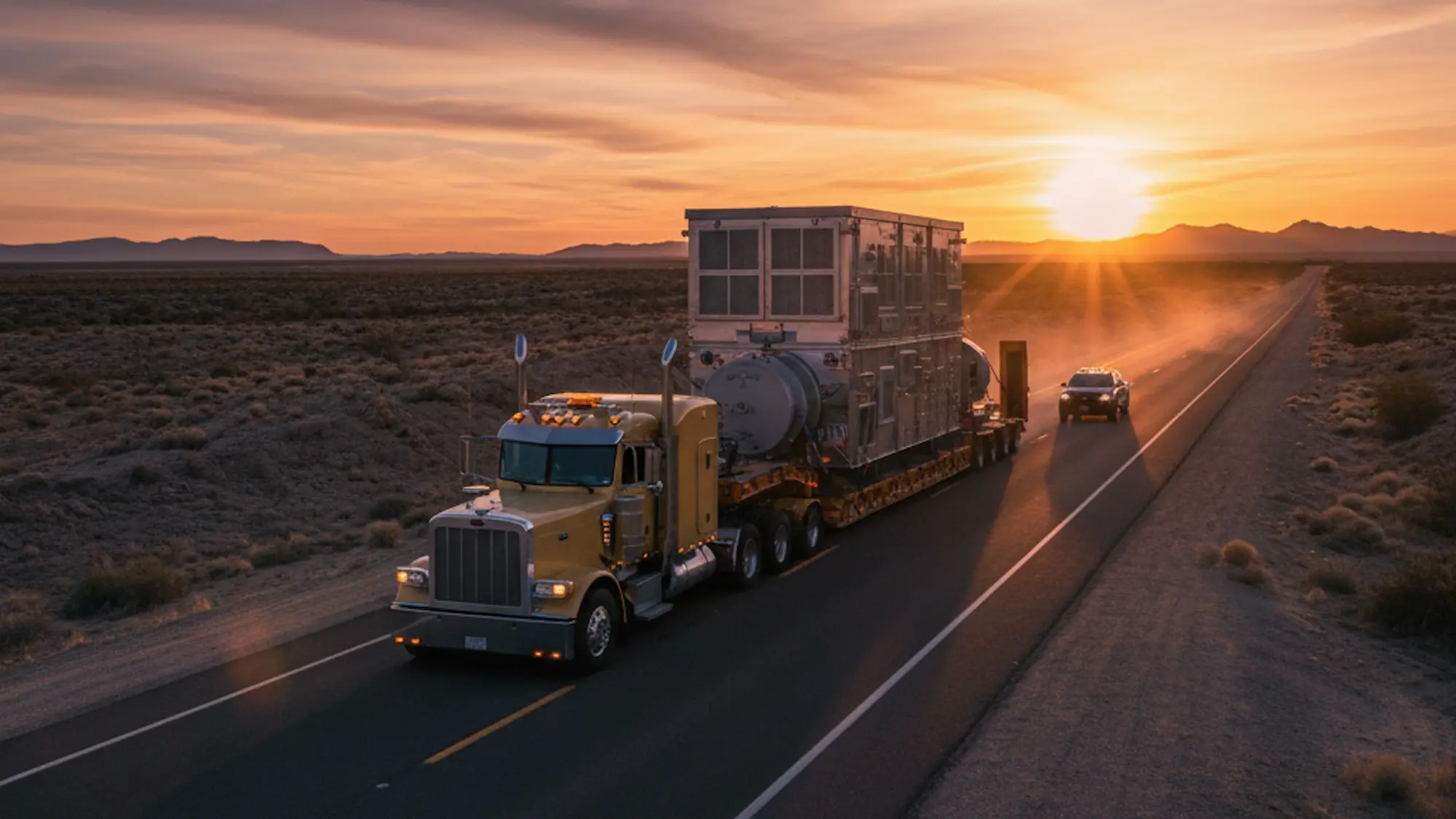
When an important utility piece—whether it's a generator, a turbine, or a substation—goes offline for a scheduled shutdown, the logistics clock starts ticking. This is the world of the power grid maintenance turnaround. It's a non-negotiable window for necessary repairs or system upgrades.
Which means your inbound materials need to be handled with the same precision as the shutdown schedule itself.
I. The High-Stakes World of Utility Turnarounds
In this environment, "close enough" simply isn't an option. Logistics failures aren't just minor inconveniences; they're expensive mistakes. In fact, as we've established before, industry data shows that for large enterprises, especially in the energy sector, an hour of unscheduled downtime,
Can cost upwards of $1 million per hour, with some estimates for the energy industry reaching $2.48 million per hour.
Success in this arena isn't about shipping freight fast. It is about achieving inbound synchronization—getting the right specialized components to the job site at the exact right moment. This is the defining challenge of critical infrastructure logistics. This guide will show you how to transform inbound freight from a constant risk into a guaranteed asset.
II. How Standard Freight Falls Short in Turnaround Scenarios
Standard freight logistics are designed to start the plan from the order date. You place an order, it's processed, and a carrier books the standard time that it will take from point A to point B. But a turnaround event can't wait for a standard carrier schedule.
The scheduled shutdown has a firm end date. Therefore, turnaround logistics has to be planned backward from the moment the part is needed to complete the work. This is the logistical pressure cooker. Everything must align perfectly with a firm deadline.
Defining "Critical Inbound"
The freight involved in scheduled shutdown logistics is anything but the usual. It is high-value, highly customized, and absolutely essential. This category includes specialized components that need specialized freight management (SFM) because they're too big, too heavy, or too fragile for a regular truck.
We are talking about components such as:
-
Transformers and reactors: Massive, sensitive, and often custom-built.
-
Proprietary control system components: Often irreplaceable with long lead times.
-
High-voltage cables and large valves: Essential infrastructure requiring careful handling.
If you have ever explored the core requirements of specialized freight management (as discussed in our post on the subject), you know it takes more than just finding a flatbed truck.
The True Cost of Misfire
In utility outage management, late arrivals are an obvious disaster, leading to project delays and labor overtime. On the other hand, if the critical machine arrives too early, it's just as much of a problem.
An early shipment can lead to:
-
Site Congestion: Equipment arrives before space is ready, blocking staging areas.
-
Double-Handling: Crews have to move the heavy component twice, which increases costs and the risk of damage.
-
Security Risks: High-value assets sit exposed to the elements or theft before the secure work window opens.
Neither option is ok. The goal here is precision: Just-In-Time (JIT) or even Just-In-Sequence (JIS) delivery is necessary to avoid these costly chain reactions that can undermine the entire project.
III. Inbound Synchronization: The Multi-Vendor Challenge
Coordinating a major power grid maintenance turnaround means managing a vast, complex supply chain. Dozens of critical components need to come together from suppliers all over the world, making logistics a serious challenge. This is the central issue of multi-vendor freight consolidation—everything must arrive in sync for the project to succeed.
How can your utility keep control, ensure compliance, and actively manage risk across such a widespread network of suppliers?
The Logistical Control Tower
Effective utility outage management starts with a single, centralized control tower that gives you complete visibility into all inbound shipments. Instead of tracking each carrier separately, this unified approach keeps you up to date on every critical part—whether it's a cable from Europe or a valve from the Midwest.
The drive for this level of control is now a high priority:
80% of organizations surveyed reported having projects underway specifically to improve their supply chain visibility.
This effort is not for show.
Companies that successfully enable full, integrated visibility can achieve a 50% reduction in recovery time from disruptions.
When a potential delay is spotted, that integrated view is what allows for a rapid, synchronized fix.
As we've mentioned in the past, the key is moving beyond simple GPS tracking. It means integrating order data, tracking milestones, and exception management into one dashboard.
Proactively Handling Risk
A skilled logistics specialist spots and addresses risks well before they threaten a deadline. Instead of reacting to every update, they actively manage issues that reach beyond just moving the freight.
Watch for these main risk factors:
-
Weather: Planning alternate routes around seasonal snow or flooding.
-
Customs and Borders: Pre-clearing international components to avoid lengthy port delays.
-
Carrier Capacity: Making sure your carrier has the dedicated capacity for specialized loads well in advance of the scheduled shutdown date.
Managing inbound logistics for a turnaround is about planning for failure and having a backup plan already in place.
IV. The "Last Meter" Challenge: Precision in the Final Mile
You've cleared customs, avoided carrier delays, and gathered all the key components. Yet, the hardest part usually comes at the very end: the last meter of delivery.
Why is this final step so challenging? Unlike standard loading docks, the delivery site is usually an active power plant, a remote substation, or a tightly controlled industrial facility. Standard carriers—built for routine dock-to-dock service—simply lack the access and expertise needed for these specialized deliveries.
Specialized Site Requirements
Success at the site depends on highly specialized, detailed execution:
-
Time-Slot Delivery: Turnarounds run on exact schedules. Freight can't just arrive "sometime that day"—it has to show up within a tight, pre-approved window, often just 15 minutes, to avoid congestion and make sure cranes and crews are available when needed.
-
Offloading Protocols: Moving heavy, custom components calls for careful rigging and certified staff to ensure safe offloading. The logistics team must coordinate the right crane and bring in a trained crew to meet the truck, often working within tight, highly controlled sites.
-
Security and Compliance: Deliveries to plants or substations must meet strict utility security rules. Drivers are pre-cleared, PPE is required, and safety paperwork must be complete on arrival.
As you consider solutions for the delivery, the importance of treating the final mile as an extension of the maintenance becomes clear. The logistics partner is responsible for placing the component exactly where the maintenance crew needs it to start work, not just dropping it at the gate.
V. Vendor Management and Compliance
A key—and often overlooked—part of power grid maintenance logistics is managing equipment vendors. Bringing in parts from multiple suppliers adds complexity that can throw off your project schedule before any freight arrives. Just one non-compliant shipment can bring everything to a stop. Utilities should focus their efforts on specialized repairs, not sorting out paperwork problems or dealing with shipments that don't meet requirements.
Standardizing the Inbound Flow
A logistics specialist takes ownership of vendor inbound freight compliance. This means stepping in to ensure every supplier adheres to strict utility standards for packaging, documentation, and safety protocols before the shipment leaves their facility.
This compliance checklist needs to include:
-
Packaging: Making sure there is proper, secure crating and blocking for specialized items.
-
Documentation: Verifying all Bills of Lading (BOLs), customs forms, and required inspection reports are accurate and complete.
-
Labeling: Guaranteeing correct, clear labeling for easy identification and staging upon arrival at a complex or remote job site.
By managing the vendor on behalf of the utility, the specialist prevents the most common inbound issues—such as missing documents or incorrect packaging—from ever reaching the plant gate. This frees the utility to focus entirely on its core maintenance task.
VI. Transforming Logistics Into an Asset
To master inbound logistics for power grid maintenance, it’s important to stop treating freight as just another transaction and start managing it as a critical part of the project. Success requires planning from the deadline backward, keeping clear visibility to coordinate multiple vendors, precise last-mile delivery, and strict vendor compliance.
In this high-pressure setting—where the stakes are millions in revenue and heavy penalties—a standard carrier is just a vendor. A specialist in specialized freight management (SFM), on the other hand, becomes your partner for risk control and uptime.
If your utility can't afford to miss a critical deadline, you need a logistics expert on your side. With over twenty years of experience, Customodal creates and runs multi-vendor inbound logistics programs to keep your operations moving. Our focused expertise in specialized freight management lets you stay focused on what matters: keeping the grid up and running.





